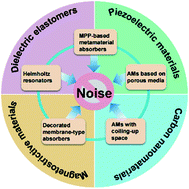Progress of low-frequency sound absorption research utilizing intelligent materials and acoustic metamaterials
Abstract
In recent years, increasing attention has been paid to the impacts of environmental noises on living creatures as well as the accuracy and stability of precise instruments. Due to inherent properties induced by large wavelength, the attenuation and manipulation of low-frequency sound waves is quite difficult to realize with traditional acoustic absorbers, yet particularly critical to modern designs. The advent of acoustic metamaterials and intelligent materials provides possibilities of energy dissipation mechanisms other than viscous dissipation and heat conduction in conventional porous sound absorbers, and therefore inspires new strategies on the design of subwavelength-scale structures. This short review aims to trace the current advancement on the low-frequency sound absorption research utilizing intelligent materials and metamaterials, including Helmholtz resonators and acoustic metamaterials based on micro-perforated plates, porous media, and decorated membrane, along with the tunable absorbing structures regulated with the function of electroactive polymers or magnetically sensitive materials. The effective principles and prospects were concluded and presented for future investigations of subwavelength-scale acoustic structures.

- This article is part of the themed collection: 2021 Reviews in RSC Advances


 Please wait while we load your content...
Please wait while we load your content...